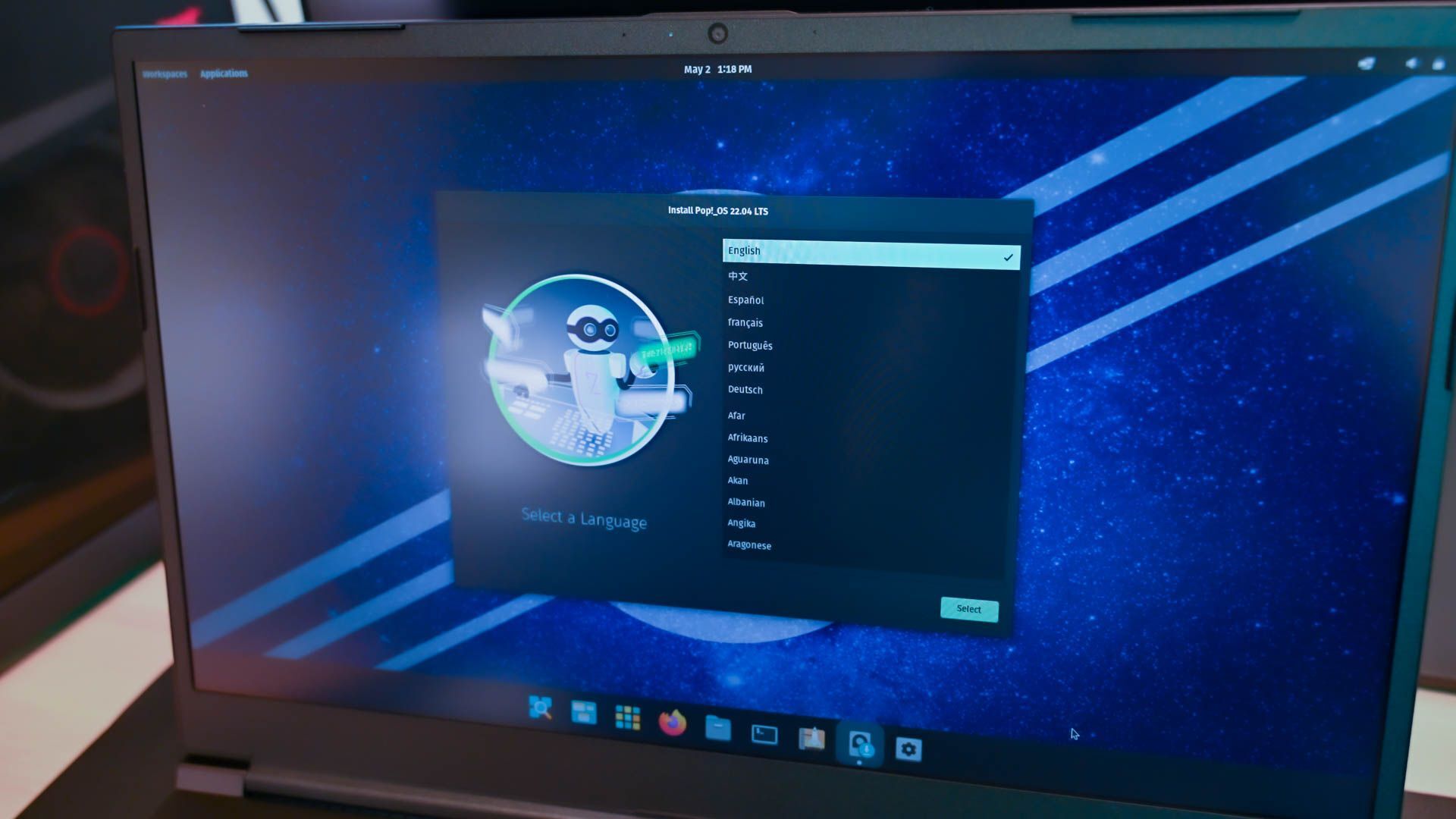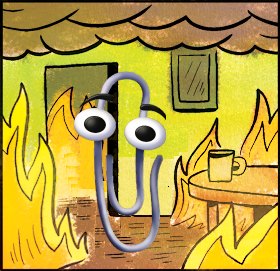Ubuntu’s popularity often makes it the default choice for new Linux users. But there are tons of other Linux operating systems that deserve your attention. As such, I’ve highlighted some Ubuntu alternatives so you can choose based on your needs and requirements—because conformity is boring.
Anyone else notice that the first three are Ubuntu?
Corporate wants you to find the difference…
“They’re the same picture” Pam from The Office
deleted by creator
Debian is good until you need to install a PPA :\
out of the loop since I’ve moved to debian and been using flatpak for the last few years, what software are you installing via PPA that isn’t generally available via flatpak?
“PPA” is Ubuntu’s branding for third party repositories. So, of course you will have a hard time adding a Ubuntu-specific third-party repository to anything that isn’t the Ubuntu version it’s made for…
Debian of course supports third party repos, just like Ubuntu. On Debian they just aren’t called “PPA”.
For more information on how to add third party repos to Debian (or Ubuntu, if you don’t use Canonical’s weird tooling), check out the Debian Wiki page on UseThirdParty or SourcesList. There’s also an (incomplete) list of third party repositories on the wiki: Unofficial. And just like with PPAs, anyone can host a Debian repo.
Debian is in many ways the “deep end”. A big part of its development philosophy is prioritizing their weirdly rigid definition of Free Software and making it hard to install anything that doesn’t fit that. I’m not saying it’s not a good distro, but IDK if it’s beginner friendly.
Debian is in many ways the “deep end”.
The first time I tried Debian was when I was new to Linux, on a laptop with both the Ethernet and Wi-Fi unsupported. On top of which, it had an nVidia GPU. It was hard.
Now I know much more about Linux and checked the Motherboard for Linux support before buying it. Debian works pretty well.
So, it’s beginner friendly as long as someone helps you out with the installation after checking up on all the stuff you will need to run.
🤣
the first distro i used is debian when i was getting on linux and im still using it
So, it’s beginner friendly as long as someone helps you out with the installation after checking up on all the stuff you will need to run.
In other words, it’s not beginner-friendly
deleted by creator
I’ve only recently switched to Debian after a couple decades with Ubuntu (because snaps) and I had a few issues during installation.
The net install failed to configure my wifi so I had to download the DVD/CD install. That worked but then I had to manually nano several config files to fix about 5 broken things for some reason.
I installed it recently on a different system, and went with the Live option (gnome) and it installed 10x easier and smoother than Ubuntu. It installed in about 4 minutes (on a new/fast computer).
So I would say Debian Live is VERY beginner friendly, but the other install methods are all messed up for some reason. Ubuntu’s default option is the Live option so I think that if Debian just kinda hid the other options on their website it would be 100% beginner friendly…
deleted by creator
The easiest hack I have encountered is to install netinstall Debian, and then on top of it, again install same Debian, without configuring or touching anything. When Debian is installed for the first time, it writes those cdrom folder files, which Debian detects upon a reinstallation. As weird as this sounds, it works reliably, both on my SSD/HDD laptop and ancient desktop with single HDD.
Last month I dualbooted my old Windows 7 desktop with Debian 12 GNOME, works smoothly until I open 10+ Firefox tabs, a Spotify stream and a video in MPV, as it has 4 GB RAM.
One time the installer got stuck on my hardware. Never again. Debian deserves a lot of credit but personally I will not go near an OS unless I am certain in advance that the initial installation will go without a hitch.
Debian? First time i installed it wanted to use CD for packages instead of online. Don’t know why. Second time it didn’t have wireless drivers as these were non free.
It’s a great distro but not for newbies.
Fedora all the way!
Non-free-firmware is now handled automatically during installation as of the most recent Debian release, just FYI. For reference, see the note at the top of this wiki page: https://wiki.debian.org/Firmware
That’s a recent development. I also though you had to get a specific build, not the normal one.
I had this problem a week or two ago when I tried to install Debian 12 on my old MacBook pro. Ended up installing something else.
Interesting, that’s kind of surprising. Do you mind sharing which model of MacBook Pro it was? I had been considering getting one for cheap for testing purposes. Also, it may not be useful to you at this point, but I figured I’d drop a link to the Debian Wiki which has a page for MBP-specific info, in case anyone reading might benefit: https://wiki.debian.org/MacBookPro
I have a late 2011 MacBook pro with a broadcom wireless card.
I’ve used this laptop to distrohop a bit and the wireless driver is always an issue. You have to install the broadcom DKMS driver or wi-fi will randomly disconnect after a random amount of time.
Fedora is also apparently newbie friendly. IME, RHEL is not, but their free developer license is good if you want to learn working with it. Some employers use RHEL exclusively, so it’s not a complete waste.
deleted by creator
Normal users want that potential for getting their hands dirty to be zero at best
Exactly this. To normal people the computer in their house is merely a tool; just another appliance that needs to work every time without any fuss.
To add to that, there’s so much “support” out there for Debian and by proxy Ubuntu. You can Google any error and you’ll find the fix. That’s what draws new people to them. Even my self even though I’m not new to the Linux ecosystem. Ubuntu makes a perfectly good and stable server operating system.
Linux is flawed. everything use systemd.
The only clean living is BSD, in my opinion OpenBSD is the easiest. NetBSD prior to 10.x does not have SSL certificates preinstalled. FreeBSD needs you to manually install X. Both FreeBSD and NetBSD have a menu based installation, while OpenBSD is question-based, and their disklabel tool have automatic partitioning.
Nice meme
No one ever recommends OpenSuse…
I am kind of afraid of the corporate influence on OpenSUSE. Same for the relationship between Ubuntu and Canonical
It also makes it more resilient in the face of hard times. Point to be noted
Is any popular stable distro free from corporate influence aside from Debian?
deleted by creator
Correct.
Tumbleweed is recommended often here.
I occasionally try out Opensuse since like 2007, but I always find the alternatives better. Why Tumbleweed over Arch, why Leap over Fedora/Debian, why suse over RHEL?
It is problematic in my experience. I think it comes down to Suse as a company lacking direction
openSuSE is cool. It was the first distro I installed way back around 2010 and still the one I would recommend to new people.
So Ubuntu, Ubuntu and unstable arch… here let me have a go:
- Fedora
- Tumbleweed
- Endeavour OS
- easy install arch with extra repos, zfs and and dracut
- Bonus for the curious
- void
- Redcore Gentoo
I agree with the Fedora recommendation. Just a all round great experience.
From an engineering perspective, I prefer Debian distros. Apt is the greatest package manager ever built. For a production server, I’d choose Debian or maybe Ubuntu if I needed to pay someone for support.
But for a desktop, Ubuntu kinda sucks. These days, I think I’d recommend Fedora to Linux noobs.
And for my toys at home, I run Arch btw.
Bit of a noob but what’s the practical differences between Apt and the others. I use Fedora and the only difference I notice is that instead of typing apt update and apt upgrade, I just type dnf update.
Practical difference: Both dnf and apt are slow as hell. Pacman is flying compared to them.
Apt is the greatest package manager ever built.
What’s your rationale for making that claim?
See the other thread.
TL;DR: Useful abstractions and a hell of a dependency solver.
ubuntu uses apt too…
Yep. From an engineering perspective I prefer Debian distros. Ubuntu is a Debian distro. I said I would consider using Ubuntu in prod, and this is the reason.
well considering the title being “ubuntu isn’t the only option” and you following “i prefer debian” with how good apt is… im sure you can see how that was misleading, then.
What can the apt of Debian do that Ubuntu can’t
Nothing. They’re mostly the same thing.
The Ubuntu version will sometimes print “ads” to your terminal :P.
For a prod server, I’d choose Debian over Ubuntu if I didn’t have paid support, because I’m not a fan of Canonical. If I needed paid support, I’d choose Ubuntu, because Debian is strictly a community distro. (That community happens to include major companies, like Google.)
Heard. Debian in the streets, Arch in the sheets!
What about Ubuntu derivatives for desktop? My go to recommendations are Pop! OS and Linux Mint (which I use).
Pop! Os user going on a year now and I can’t recommend it enough, at least as a first distro.
Linux Mint Debian Edition is my standard recommendation for desktop for those newer folks.
Straight up Debian for everything else. Debian is my desktop. And all of my servers (aside from some things I’m testing for work or something where I need to test against RHEL or something).
And Proxmox for VMs.
Last time I used latest Ubuntu:
-
Default scaling on login screen and desktop sucked. If I had vision problems it would be unusable.
-
Settings application crashed after trying to open half of the menus.
-
Despite user interface looking like it’s made for tablets, the actual touch usability was horrible. I couldn’t even resize windows without being precise as fuck and there was no windows snapping despite it being a feature on Windows for more than a decade.
-
Couldn’t double click on Windows program to run it in Wine despite it being possible 10 years ago.
-
Reliance on snaps, even though installing software from 3rd party sources still being horrible.
-
Fedora’s near daily update and restart cycle is so annoying esp when you have an encrypted hard drive. I know it’s part of the deal and I’m lazy, but all I’m using it for is a Jellyfin client.
Same. Albeit I’m on manjaro which suffers from the same issue. Distro hopping on an encrypted drive with no separate home partition is a huge pain in the butt
What do you mean restart cycle? You only have to restart if you want to load the new kernel (there’s technically a way to avoid even that). If you don’t feel like installing a better tool for the job like Debian, just update less, most of your packages will still be newer than most distros. Also not sure why you would encrypt if its just jellyfin client.
In the Software Manager, whenever there is an update you must press “Restart & Install” in order to update. Never seen a restart not be required. Why would I not update when I would be potentially miss important security patches?
Also I typically encrypt during install for enhanced privacy. Probably overkill but yeah. I don’t really have a specific reason other than that.
My other system is Linux Mint 21.3 and restarts are very infrequent.
Ah I am not familiar with the software store, you don’t have to do that from the command line. And thats true, I’m not suggesting to never update, just less. Also if theres not much to steal on your computer, saftey is a little less important. I would personally feel comfortable updating once per month but thats up to each user. I sat on fedora 37 for way too long because Ubuntu made me afraid of major upgrades.
I was fighting rpm hell on redhat for the 3rd or 4th time using red hat linux 5 to 6 or perhaps 6 to 7. When i first installed debian potato on my daily driver. We had 20 ish servers, but the constant hunt for the right combo of rpm’s made me distro jump my own machine. A while later i was floored when i could apt-get full-upgrade to the next debian version without rpm hell and almost everything just worked. Never installed another redhat machine and have been using debian + kde ever since. And 99,3% of all servers i maintain are now debian. A few odd ubuntu machines for $$reasons.
Is rpm hell gone for good nowadays?
Apt is the greatest package manager ever built.
Urgh, no, it’s not. Everything about it is super crusty if you go beyond simply installing packages and adding others’ PPAs IMO.
- Packages often enable the services they install right away. Someone told me they got locked out over SSH because they installed a firewall package that locked everything down by default, and the service got started on install. I guess that’s technically more of an issue with the way things are packaged rather than the package manager itself, though.
- To temporarily install a package (so that it will get uninstalled with the next autoremove) you need to use aptitude to install the package, or run apt-mark auto after installing (which will also clear the manually installed flag if it was manually installed before), apt has no syntax for it.
- dpkg-scanpackages is eternally slow, I had to write a wrapper for it that runs it separately for every package and caches the result because I didn’t want to wait multiple minutes for it to rebuild the PPA package index
- The standard packaging tools (dh-make or debuild, I think I’ve looked at both) are insane, so much so that I gave up and wrote something that takes files similar to Arch PKGBUILDs which calls dpkg-deb at the very end.
I could probably list more but I haven’t had to touch apt in a while, thankfully. But it is probably the #1 reason I avoid anything Debian-based. #2 is probably their Frankenstein sysvinit/systemd setup.
I do have to say that apt remove vs purge is pretty cool though.
What do you like about it?
Packages often enable the services they install right away.
That’s a problem of the package, not the package manager.
Generally this fits with Debian’s philosophy. But regardless I think it’s out-of-scope for why Apt is good. You could make a distro with Apt and not have your packages do this.
To temporarily install a package […]
I’m not talking about
aptthe CLI tool, but the actual package manager. The plainapttool is only designed to be a convenience wrapper for common workflows implemented in other tools.As you correctly pointed out, Apt has the distinction between packages installed as a dependency (“auto installed”) versus packages installed directly (“manually installed”). This is precisely one of the reasons why I consider Apt the best package manager. (Yes, I know other package managers can do this, not all though.)
If you want to install a package as manual, then later mark it as auto, you can do that with
apt-mark.dpkg-scanpackages is eternally slow.
Are you maintaining a PPA for others?
Frankly, I’ve never run into this problem.
The standard packaging tools […] are insane.
dh_makehelps you create a package that adheres to Debian policy, and there is good reason for Debian to have those policies. But if you’re just packaging something yourself, you don’t have to use it. It’s just a template for new packages.At the end of the day, all you really need to create a deb is to create two files
debian/controlanddebian/rules. These are the equivalent to a PKGBUILD. The control file specifies all of the dependency metadata, and therulesfile contains the install script.The difference in packaging philosophy is that PKGBUILDs are external and they download the upstream sources. On the other hand, in Debian, they rehost the upstream package and add the
debiandirectory. This means that building Debian packages is mostly hermetic: you don’t need access to the network.What do you like about it?
Mostly that it makes super useful distinctions between concepts. But there are other goodies.
- Manually installed versus auto installed.
- Uninstalled versus purged.
- Upgrade versus Dist Upgrade.
- Dependency versus suggestion versus recommendation.
- The alternatives system.
- Pinning, and relatedly that packages can include version constraints in their dependencies.
- Interactive configuration at install time.
- Support for both source and binary packages.
I also do appreciate that Debian pre-configures packages to work together with the same set of conventions out of the box. But again, that’s a property of the packages, not of Apt.
I’m not talking about apt the CLI tool, but the actual package manager. The plain apt tool is only designed to be a convenience wrapper for common workflows implemented in other tools.
Sure, but the interface is probably just as important as the actual logic behind it, isn’t it?
As you correctly pointed out, Apt has the distinction between packages installed as a dependency (“auto installed”) versus packages installed directly (“manually installed”). This is precisely one of the reasons why I consider Apt the best package manager.
Honestly I would consider that one of the fundamental things a package manager must do, I didn’t think it was a special thing haha
If you want to install a package as manual, then later mark it as auto, you can do that with
apt-mark.Yeah, I know. But if you want to manually install a package like that, you have to remember the extra step after it’s finished installing instead of before the install. It’s just unergonomic, for something that could be a flag (e.g. in
emerge -1) and that I at least use fairly often.Another problem with it being a two-step thing is that if you do it unconditionally in a script, it doesn’t retain the flag from before the previous installation command, you need a third step, i.e. checking if the package was installed before. My use case for this was installing dependencies for a package build which should be able to be removed again afterward, while not affecting the subset that were already installed explicitly.
Now that I think about it, it’s probably a good idea to always check if a package needs to be installed before installing it if you script it, though, because otherwise it might be unnecessarily reinstalled. Fair enough.
Are you maintaining a PPA for others?
Yeah, I maintain some software/config/meta packages for the computers at the uni I study at. Before, I’m pretty sure the packages were manually packaged with every update and I wanted to automate it a bit and also make clear how to get from the source tarballs to the final build.
On the other hand, in Debian, they rehost the upstream package and add the debian directory. This means that building Debian packages is mostly hermetic: you don’t need access to the network.
Ahh, the way it’s structured makes a lot more sense knowing that. Coming from packaging stuff for Arch, Gentoo and NixOS, where the packaging process is essentially the same for all three, with you usually supplying source download URLs, I had absolutely no idea how debian/rules would allow me to do anything and felt like I was missing a big thing. I guess it really is just a Makefile that you run directly, and that makes sense if you already have the sources in your tree?
- Pinning, and relatedly that packages can include version constraints in their dependencies.
This, at least version constraints, is another one I’d consider essential tbh. The rest are great though, I agree.
Sure, but the interface is probably just as important as the actual logic behind it, isn’t it?
The logic is why I love Apt. Most robust dependency resolution algorithms I’ve used.
But also, I don’t have any issues with the CLI. Having a distinction between
apt-getandapt-cacheandapt-markdoesn’t feel weird to me. You’re practically just separating the top-level sub commands by a dash instead of a space. Theaptcommand is really just a convenience thing, and there are specialized tools for the more advanced things. Which is fine by me.Also, the top level
aptcommand doesn’t guarantee a stable CLI, so for scripting you’re supposed to useapt-getand friends anyway.Honestly I would consider that one of the fundamental things a package manager must do.
You’d be surprised. Homebrew (the de facto standard package manager for macOS) doesn’t do this. Though, you can at least lookup the “leaf” packages which are not dependencies of any other package.
And, most language-specific package managers can’t do this. E.g. if you install software with
piporcargo.you have to remember the extra step after it’s finished installing
If the package is in use, it shouldn’t be an orphan.
For example, what if you race with a cleanup job that is removing orphans? (Debian is hyper stable, so I often enable unattended upgrades with autoremove. I’m not so comfortable doing that on Arch ;)
What you’ve described is just an
apt-get installwhen you start and andapt-get removewhen you’re done. Or more properly setting it as a build dependency in your source package, to let Apt handle it.But also, why uninstall build tools?
This, at least version constraints, is another one I’d consider essential tbh. The rest are great though, I agree.
Yeah, version constraints are common. But most other package managers bail with an error when they encounter a conflict. Apt is really good about solving conflicts and proposing solutions. Often it will propose multiple solutions to your conflict for you to choose from.
Again, it’s the solver part of Apt that makes it the best IMO.
This article is actually well written. I might bookmark it to send to people looking to switch.
It’s good but Fedora or at least OpenSUSE should definitely take the place of Manjaro.
I wouldn’t use openSUSE. It is way to obscure.
Fuck, now I wanna distro hop
Garuda gets a mention, as a gamer I can highly recommend Garuda, a lot of work has gone into it and it looks great too… especially if you like neon. 🥰
Only last year I’ve switched from Windows to Linux and I choose Garuda because I wanted to learn Arch from the beginning. Boy am I happy how well it worked out of the box. The most annoying issue was to get the xbox gamepad dongle to work but aside from the it’s so good.
Well as a psychopath, I always recommend beginners start with Gentoo. Guaranteed they won’t go back to Mac or Windows. /s
By starting the switch to Gentoo, they either learn Linux well enough to never want to go back, or they fubar their system so bad that they can’t go back.
Back in early 2000s I ran Gentoo as daily driver for a year, while almost a Linux noob, but eager to learn. Installation instructions were long, but excellent.
It was fun, and worked well, but in the end the long compilation times got the better of me. Now I heard they are including binary packages, so the itch is coming back.
Right now running opensuse tumbleweed, which works fine, sometimes too smoothly.
Right? I’ve been on Tumbleweed a few years - never actually expected it rolling so effortlessly.
It would of been funnier if you left out the /s

targeted at regular desktop users
While Slackware and Debian are the oldest still-maintained Linux distros, I don’t think either had a desktop-first approach.
I considered putting logos of some of the many more user-friendly pre-ubuntu distros in the meme but was lazy.
Debian was intended to be for regular desktop users back then too, though.
…Except Debian wasn’t even user-friendly when I used it two years after Ubuntu’s release. Red Hat Linux (not RHEL, which came later) was the only distro I’m aware of before Ubuntu that was more UX-focused.
Edit: I forgot about a few others — SUSE, Corel Linux, Lindows/Linspire, and others. Buuuuuuut most of those distros don’t exist anymore. I still stand by that Debian didn’t used to be as noob-friendly as it is these days.
SUSE?
I forgot about Corel Linux and Lindows as well now that I think on it.
I don’t think that’s particularly wrong, tbh.
The key words being targeted at regular desktop users.
Obviously far from being one of the first distros, or distros with a GUI. But targeted at regular desktop users - i.e. “normies”? Absolutely.
People need to remember how crappy and janky the desktop was before Canonical spearheaded a lot of usability improvements.
If only they had continued along that path :/
There were lots of distros that tried to target regular users before it. Mandrake/Conectiva/Mandriva, Corel, Mepis, Lindows, Linspire etc. just off the top of my head.
Hell, Lindows came preinstalled on Walmart PCs at some point.
Mandrake/Conectiva/Mandriva
That’s two.
(And hey, thank suse for killing Conectiva)
Slackware is a garbage distro purely because it doesn’t have a functional package manager supporting dependency resolution
one of the first
there were dozens of others in the 11 years between the first and ubuntu
“Targeted at regular desktop users”
I really feel like you’re missing the idea of that sentence deliberately.
What Linux distribution came before Ubuntu that was specifically designed to be user friendly for a non-technical user?
What Linux distribution came before Ubuntu that was specifically designed to be user friendly for a non-technical user?
There were a bunch of distros advertising ease of use; several were even sold in physical boxes (which was the style at the time) and marketed to consumers at retail stores like BestBuy years before Ubuntu started.
Here are four pictures of the physical packaging for three of those pre-ubuntu desktop distros designed to be user friendly and marketed to the general public:
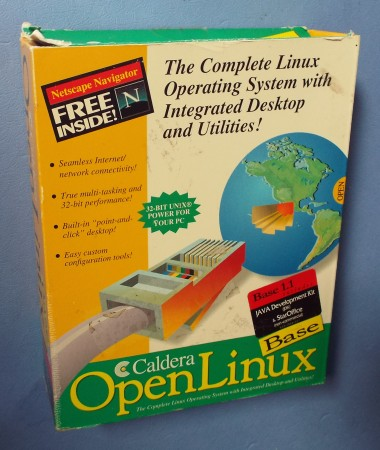
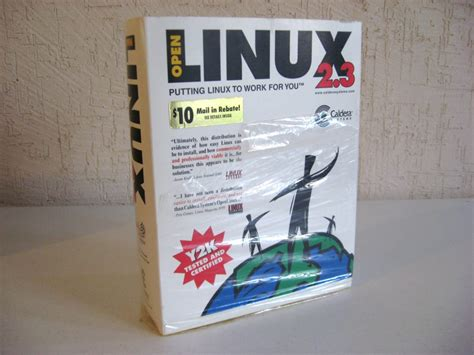
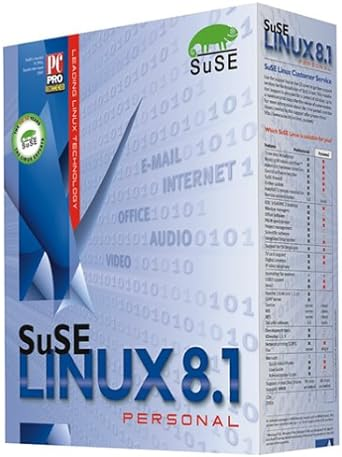
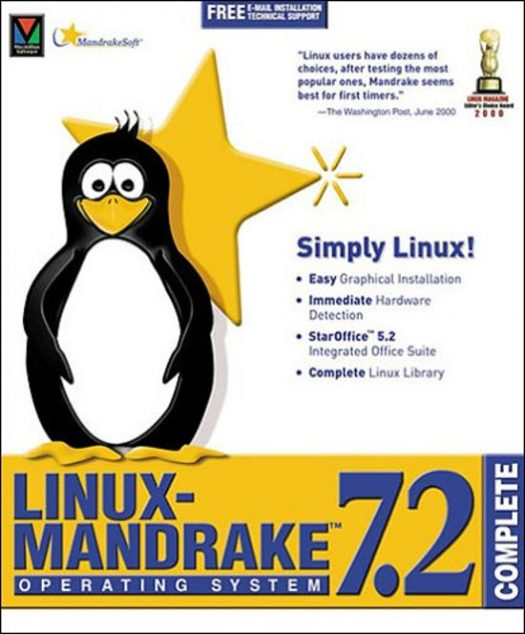
Ubuntu was better than what came before it in many ways, and it deserves credit for advancing desktop Linux adoption both then and now, but it was not “one of the first” by any stretch.
Yeah, no.
It was one of the first that didn’t make you to want to tear your hair out, I’ll give them that.
That’s what I interpreted from the “targeted at regular desktop users” part.
Certainly not one of the first distros. But one of the first that almost any normal person would actually be able to install and use? Absolutely.
There were multiple before it that claimed to be easy for anybody to use, but most of them still weren’t by a long stretch.
Ubuntu is not even good in my opinion. At least not as a normie Distro.
Yes they have lots of docs online but “it is good because people think it is good” is not a good argument.
If you dont like GNOME I guess you will have a harder life anyways, as Distros with KDE are just a really hard task. Like anything stable is not a good idea, I at least reported 30 bugs that will never get backported fixes.
The fact that appimages are broken on Ubuntu is like the only thing that I completely understand and dont care about. Appimages needs to get their stuff together.
I hope many projects will convert from Appimage to Flatpak
I hope many projects will convert from Appimage to Flatpak
They seem like different projects with different goals. Appimages are portable executables.
Flatpak, to me, is something you install on a system and run with a flatpak runtime that is installed on your PC. I think its a fantastic way to sandbox programs with differing dependencies, but you still install programs and run them on your PC.
Appimage, on the other hand, is a wholly-contained executable. It is less efficient than flatpak in every way if you are installing apps on a system, but it is more portable. I can throw a handful of appimages on a USB stick and carry them from machine to machine (or mount an ISO in the case of VMs). I can plug in my “troubleshooting and development” stick to an otherwise barebones server at my datacenter, fix an issue with a comfortable set of useful apps, then unplug and leave the machine untouched.
Appimage is not a replacement for flatpak, but it has its own purpose. Snap is more similar to flatpak, but inferior in every single way. If we must get rid of one, can we phase that one out?
why are distros with KDE a really hard task? users who want customizations will have a horrible time with gnome
That are two unrelated or even contradictory scentences.
Gnome is waaay more reduced, so it has less bugs. It will work way better on stable Distros.
Also because of some things (KDE 4.0?) GNOME became the default Desktop, and Distros orient at its release cycles.
KDE has so many bugs and fixes that I think calling 5.27 “stable” is misleading.
KDE is default on some distros and is supported directly as a variant on most major distros so I wouldn’t say GNOME is the default.
But my point is that at least some of the appeal of desktop linux is customization, and GNOME will be a disappointment for the users looking for that.
Otherwise I agree vanilla GNOME is rock solid and great for new users!
I meant “shipping a KDE Distro is a hard task”, that should be more clear. For sure, KDE forever. GNOME is either CLI-only (even for basic settings) or install tons of apps that only do one thing (ThE UnIx pHiLoSoPhY) or dont change anything.
Weird as my AppImages work fine on Ubuntu 22.04LTS
Manjaro? nah, don’t
Well many search engine results recommended ubuntu for newbie.
I remembered the first time i used linux (15 years ago), i choose ubuntu because google recommended it & it has very nice UI compared to other linux that timeUbuntu was the first distribution trying to release a consistent OS, rather than throwing every Linux software possible and letting the user choose.
Also they provided graphical tools for everything, in a user friendly way and consistent with the rest of the Desktop.
But nowadays most mainstream distributions propose that anyway.
Ubuntu was pretty good, until 2010 or so. People who still recommend it probably haven’t used it in the last 10 years.


